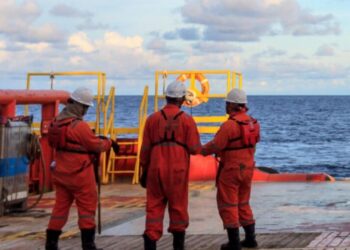The 9th session (20-29 September) of the International Maritime Organization (IMO) Sub-Committee on Carriage of Cargoes and Containers (CCC), made progress on the development recommendations for entering enclosed spaces onboard.
In particular, a working group established during the meeting made important progress on the development of preliminary draft revised recommendations for entering enclosed spaces aboard ships. A correspondence group was established to further develop the draft recommendations, with a view to finalization at CCC 10.
As an enclosed space is defined a space which has at least one of the following characteristics:
- limited openings for entry and exit;
- unfavorable natural ventilation;
- is not designed for continuous worker occupancy.
Examples of enclosed spaces that can be found onboard:
- Cargo spaces
- Double bottom
- Fuel tanks
- Ballast tanks
- Compressor rooms
- Engine crankcases
Recommendations on entering enclosed spaces on board ships were adopted in 2011 by resolution A.1050(27). However, in recent years, an alarming frequency of accidents related to entering enclosed spaces has been observed, resulting in a profoundly distressing culmination of human lives lost.
Risk mitigation strategies, suggested by TT Club:
- Always assume that confined spaces are unsafe
- Create awareness of the risks and continually invest in staff training (recognising particularly the emotional reaction of would be rescuers)
- Procedures need to be robust but not overly burdensome or complex (impeding the tendency for short cuts is important)
- Embody a culture where time and resource are fully aligned to safety, regardless how minor the immediate task
- If entry is unavoidable, undertake a risk assessment to ensure that there is a safe system of work, including making sure there are emergency arrangements in place before work starts (always prepare for the worst)
- Where possible, ventilate the area before entry and ensure good general ventilation during work activities (use breathing apparatus if the air inside the space cannot be made fit to breathe)
- Test the air before entry; monitor it and the workers during the procedure, deploying a watcher who is physically present
- Ensure that people inside the space can communicate with those on the outside
- Restrict access to authorised personnel – such as implementing a permit to work system
- Ensure that the workers selected are competent and physically able to do the task; air quality monitoring or safety equipment is of little benefit if the users are insufficiently trained to use it
- Perform emergency rescue drills, providing practice in the process of safely removing an injured or unconscious person


































































